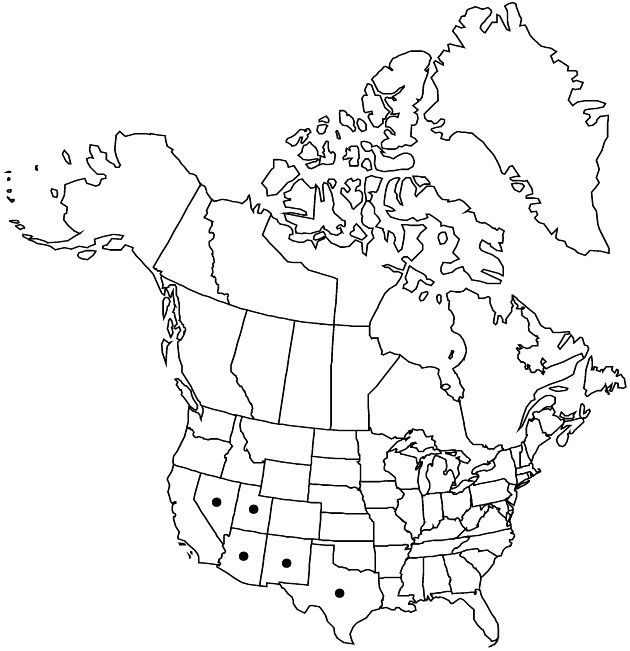Parthenium incanum
in A. von Humboldt et al., Nov. Gen. Sp. 4(fol.): 204. 1818.
4(qto.): 260. plate 391. 1820.
Common names: Mariola
Revision as of 15:33, 18 September 2019 by FNA>Volume Importer
Shrubs, 30–100+ cm. Leaf blades oval-elliptic to obovate, 15–25(–40+) × 6–15(–25+) mm, sometimes pinnately (3–)5–7-lobed or round-toothed, ultimate margins entire, faces tomentose (gray to white) and gland-dotted. Heads radiate, in glomerules of 3–5+ on branched stalks 1–5(–12+) cm, forming compound, corymbiform arrays. Peduncles 1–3+ mm. Phyllaries: outer 5 oblong, 1.5–2 mm, inner 5 orbiculate, 2–2.5 mm. Pistillate florets 5; corolla laminae ovate, 1–1.5 mm. Disc florets 8–20(–30+). Cypselae obovoid, 1.5–2 mm; pappus-like enations 2(–3), erect to spreading, ± subulate, 0.5–1 mm. 2n = 54.
Phenology: Flowering (May–)Jul–Nov.
Habitat: Openings in desert scrub, often on limestone soils
Elevation: 1000–1500 m
Distribution

Ariz., Nev., N.Mex., Tex., Utah, Mexico.
Discussion
Selected References
None.
Lower Taxa
None.